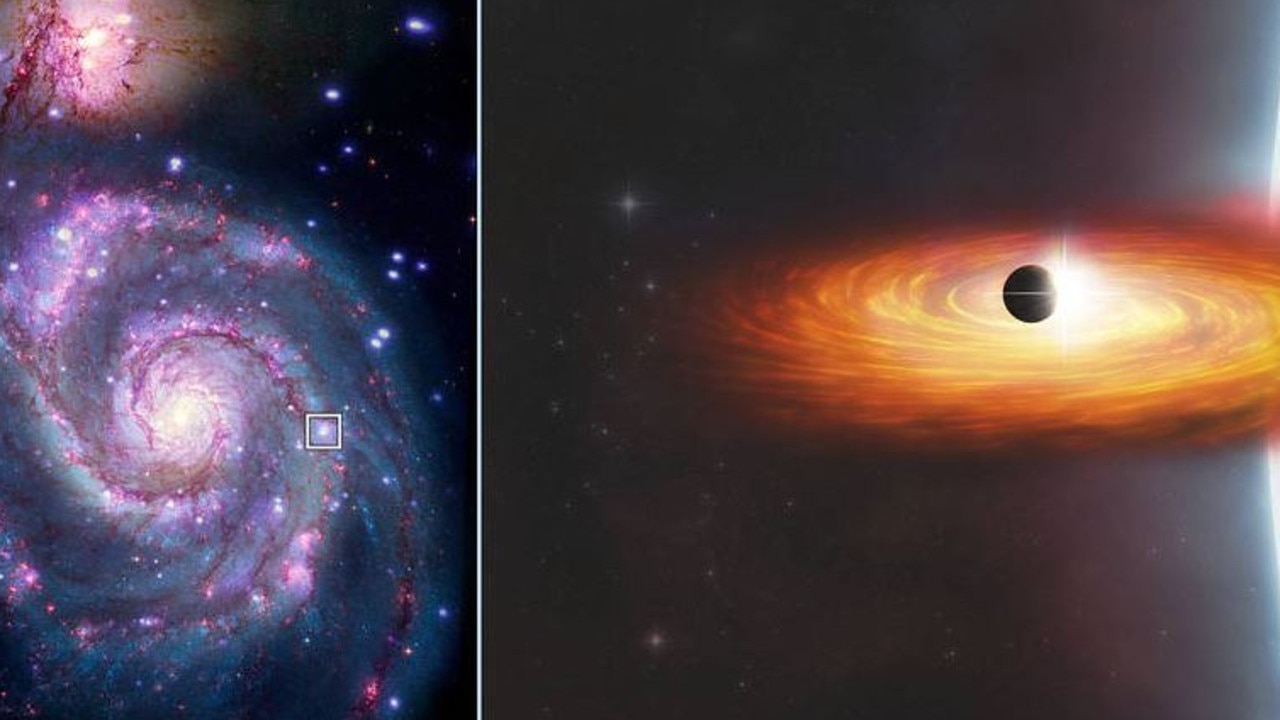Stunning planet discovery by Nasa
Astronomers believe they have found evidence of a planet the size of Saturn in the Whirlpool galaxy after studying data from X-rays.
Astronomers have found evidence of a possible planet in the M51 (“Whirlpool”) galaxy.
If confirmed, it will be the first time a planet has been detected outside the Milky Way.
The discovery of the exoplanet was made using NASA’s Chandra X-ray Observatory.
The planet in M51 is about 28 million light-years away. That means it would take a space ship – travelling at the fastest speed possible in the universe – 28 million years to reach the planet.
Exoplanets are normally discovered by watching for small dips in light as the planets pass in front of their star – as viewed from Earth.
It’s thought the planet is about the size of Saturn and is orbiting a neutron star or black hole about 20 times the mass of the Sun.
The material near the neutron star or black hole has become superheated and glows in X-rays – which the team used to their advantage.
Because the region producing bright X-rays is small, a planet passing in front blocks most or all of the X-rays, making the transit easier to spot because the X-rays disappear.
The X-ray transit found by the team lasted about three hours, during which the X-ray emission decreased to zero.
Based on this and other information, the researchers estimate the exoplanet candidate in M51-ULS-1 would be roughly the size of Saturn and orbits the binary system at about twice the distance of Saturn from the Sun.
The large orbit means the planet won’t pass in front of the system again for about 70 years.
Rosanne Di Stefano from the Center for Astrophysics in Cambridge led the study, published today in Nature Astronomy.
“We are trying to open up a whole new arena for finding other worlds by searching for planet candidates at X-ray wavelengths, a strategy that makes it possible to discover them in other galaxies,” Dr Di Stefano said.
Could it just be dust?
There is a possibility that the dimming could have been caused by a cloud of gas and dust passing in front of the X-ray source.
However, the researchers consider this to be an unlikely explanation, as the characteristics of the event observed in M51-ULS-1 are not consistent with the passage of such a cloud. The model of a planet candidate is, however, consistent with the data.
For all the latest Technology News Click Here

